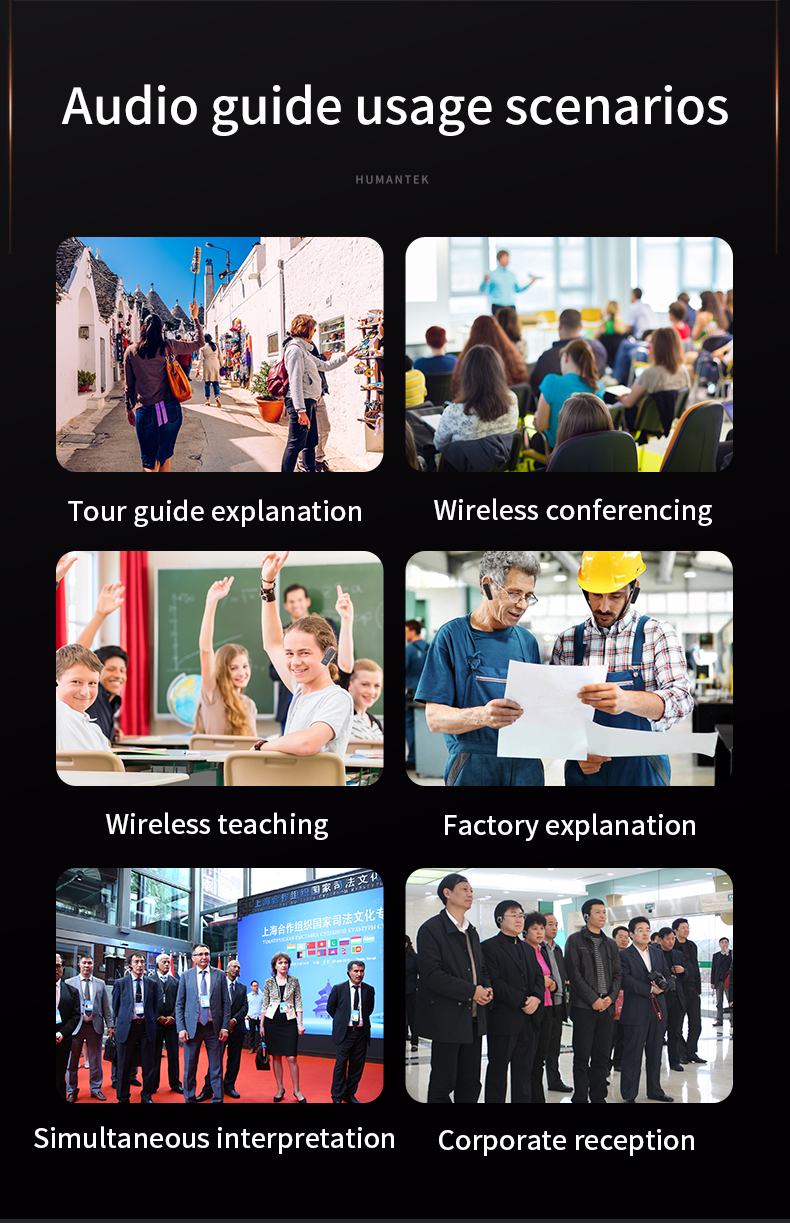
Audio guider system: "Smart guides" in cultural and tourism scenarios, reshaping the new paradigm of immersive experiences
Today, as the cultural tourism industry transitions from "sightseeing tours" to "experience tours", voice explanation devices are leveraging their dual advantages of technological innovation and cultural dissemination to become important tools for enhancing the tourist experience and empowering the intelligent upgrade of scenic spots. From the "pocket guide" at the Palace Museum to the "smart earphones" at the Mogao Caves in Dunhuang, this technology is redefining the standards of cultural tourism services.
I. Technology Empowerment: Breaking Through the Three Limitations of Traditional Guiding
Compared with traditional manual explanations and text-based guiding, the advantages ofaudio guider system are reflected in the following aspects:
1. Revolution in Time and Space Freedom
- Supports tourists to choose their own visiting pace, avoiding the "rushing around" experience of group explanations.
- Data from the Palace Museum shows that the average visiting time of tourists using electronic guiding devices has increased by 40%.
2. Upgraded Content Presentation Dimensions
- Can embed historical sound effects, expert interviews, and situational dramas and other multimedia content.
- The Songcheng Scenic Area in Hangzhou has increased tourists' immersion by 65% through role-playing voice guiding.
3. Breakthrough in Service Capacity
- A single device can store more than 8 hours of multilingual content, solving the problem of shortage of tour guides during peak seasons.
II. Precise Reach of Cultural Dissemination
Audio guider system are building a new cultural dissemination matrix:
- Stratified Explanation System
Customized content such as children's, expert, and quick-view versions meet the needs of different groups, increasing the satisfaction rate of parent-child visitors to the Suzhou Museum by 32%.
- Cultural Decoder
Through AR positioning technology, the Xi'an Stele Forest Museum has achieved the spatial superposition of stone stele rubbings and voice explanations, making calligraphy art "audible".
- Barrier-free Dissemination Bridge
Designs such as sign language video guides and Braille operation interfaces have increased the visit rate of people with disabilities by 27% year-on-year (data from the National Museum of China in 2023).
III. Hidden Enhancement of Operational Efficiency
1. Dynamic Management Tools
- By analyzing visitor movement patterns through GPS heat maps, the Summer Palace in Beijing has optimized the locations of 17 tour guide signs.
2. Extension of Commercial Value
- By integrating guidance to the cultural and creative store into the exhibition explanations, the Shanghai Natural History Museum has increased the sales of peripheral products by 22%.
3. Low-carbon Operation and Maintenance Model
- Compared with paper guidebooks, a single device can reduce paper consumption by 3.6 kilograms per year. The Huangshan Scenic Area has achieved an annual carbon reduction of 12 tons.
IV. Future Evolution Directions
With the penetration of AIGC technology, the next generation of voice explainers will present three major trends:
- Upgraded intelligent interaction: ChatGPT-style question-and-answer systems enable "instant response"
- Integration with the metaverse: Digital doppelgänger tour guides provide cross-temporal and spatial explanation services
- Emotional design: Provide emotion-matched explanation styles through voiceprint recognition
When cultural and tourism experiences enter the era of "content is king", audio guider system have transcended their simple tool attributes and become a new type of medium that connects history and modernity, technology and humanity. Their value lies not only in solving the question of "what to explain", but more importantly, in exploring "how to better inherit" - this is precisely the most imaginative dimension of innovation in smart cultural tourism.